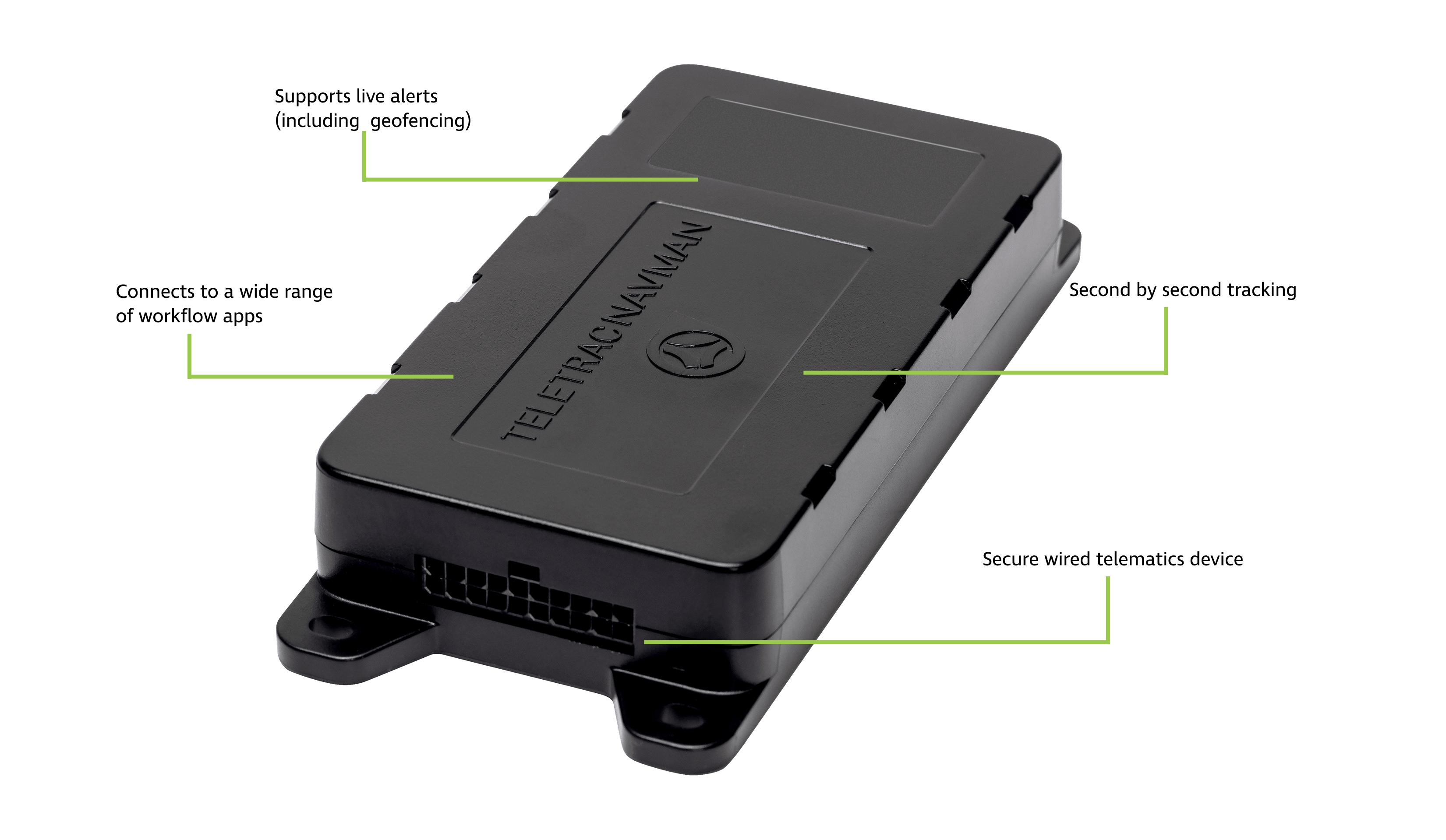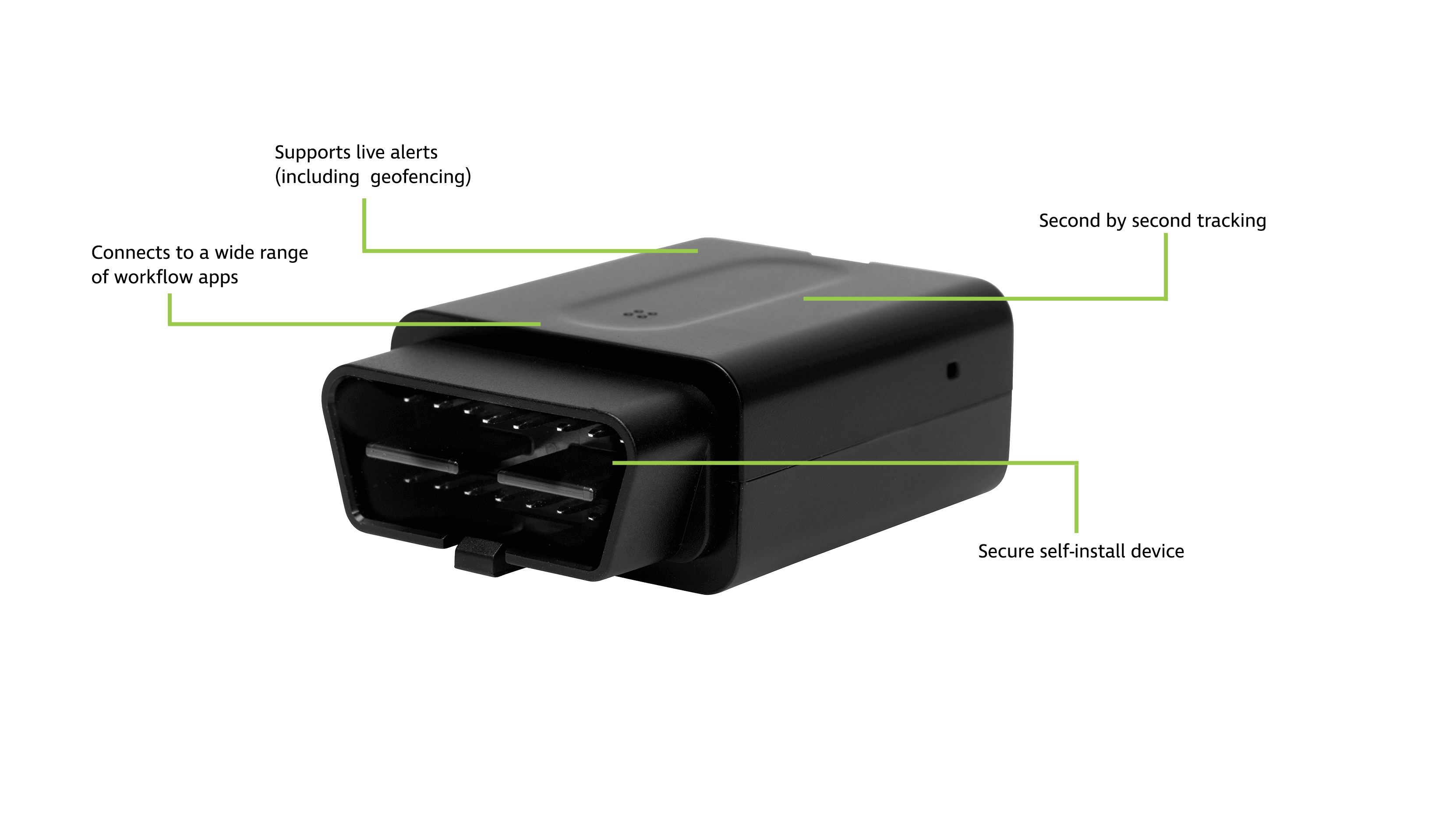Vehicle Tracking Devices: What's the Difference?
When it comes to outfitting your vehicles with a GPS fleet tracking device, there are several options. From professionally installed, tamper-proof devices to self-install options, how do you know what device is right for your business?
There are three main types of vehicle tracking devices:
- Professionally installed (hard-wired)
- Self-installed (plug-and-play)
Each one of these vehicle tracking devices has their own pros and cons. Which one is right for your business depends on several factors, including cost, what data you wish to collect, and whether you want to track more than just vehicles.
Let’s take a look at the pros and cons of these three popular vehicle-tracking devices.
Professionally installed vehicle tracking devices

Professionally installed vehicle tracking devices are hardwired into the cab of the vehicle and are usually tamper-proof. Hard-wired devices add an additional layer of data security and reliability that other devices do not provide.
Pros of professionally installed vehicle tracking devices
- Security: Since these devices are hardwired into the vehicle’s engine diagnostics system and securely fastened underneath the dashboard, they tend to be the most secure, tamper-proof option.
- Reliability: With sensors that alert management anytime a device is tampered with and the capability to connect peripheral devices through wired connections, a professionally installed device is the most reliable choice.
More data: Beyond basic engine diagnostics, hardwired systems collect far more data than other devices through a range of sensors and other in-vehicle devices, allowing fleet managers to monitor more and get a full picture of fleet performance and driver behaviour.
Cons of professionally installed vehicle tracking devices
- Cost: Professional installations are more expensive for several reasons. Excluding the additional cost of hardware and installations, professionally installed devices take longer to install and requires planning to limit vehicle downtime. Yet your supplier may factor this into the cost of the hardware and additional charges may not be applicable.
- Hard to move: If you sell or otherwise decommission a vehicle, switching the vehicle tracking device to another vehicle needs planning and can take more time, often requiring a professional to carefully remove the device to ensure it doesn't affect the condition of the asset.
Businesses that value safety and security are more likely to choose hardwired, professionally installed vehicle tracking devices. This is especially true when important business and customer data is being used for invoicing or other critical business workflows, or when implementing and managing driver safety incentive programs.
Self-installed vehicle tracking devices

Self-installed vehicle tracking devices are what their name implies: devices that can simply and easily be installed without a professional installation engineer. These are popular for a number of reasons, including quicker installation times and easier movement between vehicles.
Pros of self-installed vehicle tracking devices
- Ease of use: These devices do not require any hardwire connections, they can simply be plugged into your vehicle's OBD-II, JBUS or another diagnostics port and commence vehicle tracking.
- Portability: It is easier to physically move these vehicle tracking devices from one vehicle to another which is handy for fleets that have high volumes of vehicle turnover or run short-term seasonal fleets. Once switched you will still need to notify your provider so they can update vehicle assignment.
- Cost: Plug-and-play devices don’t need to be professionally installed, lowering the cost to implement the technology and vehicle downtime.
Cons of self-install devices
- Security: Easy to install means easy to remove. Since these devices are not securely hardwired to the vehicle, removing them is easy, which makes stolen vehicle tracking nearly impossible.
- Limited data: Plug-and-play devices typically only record vehicle engine data, such as milage and ignition status. Other sensors, including seatbelt monitoring, can be added but is dependent on less reliable Bluetooth connections.
Businesses with a high level of turnover in their fleet, or those that use seasonal or rental vehicles, typically choose self-install devices for their flexibility. They are also more frequently used for fleets that don’t rely on the data for state or federal compliance. They are also more frequently used for fleets that don’t rely on the data for state or federal compliance.
